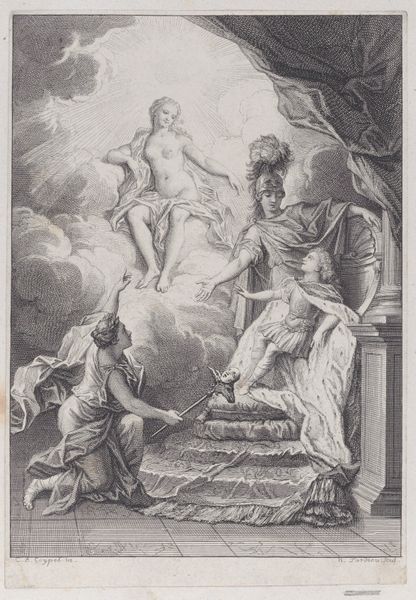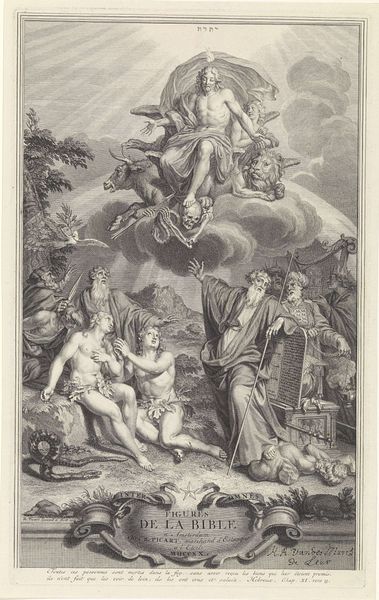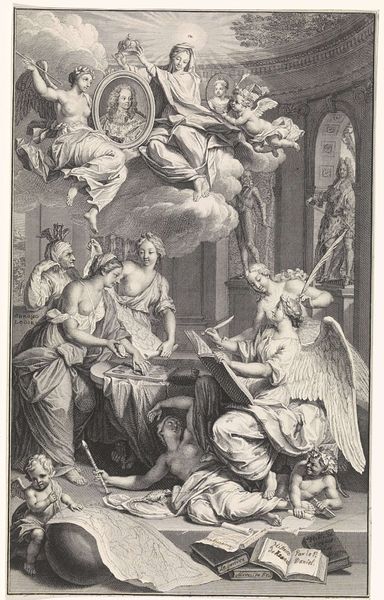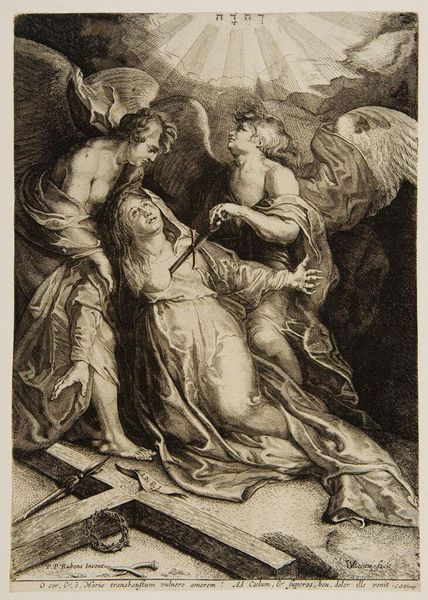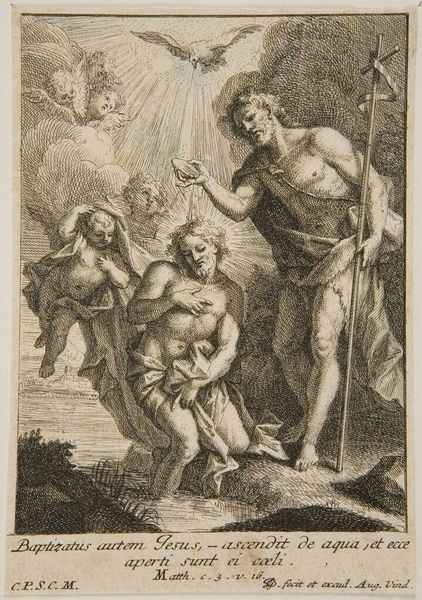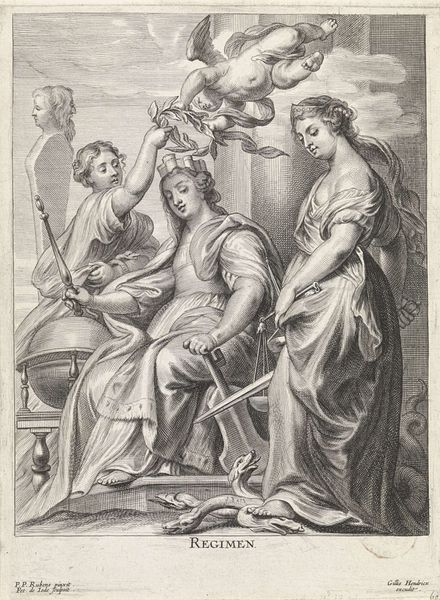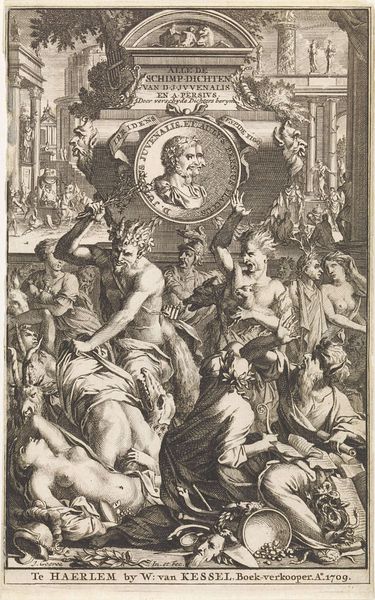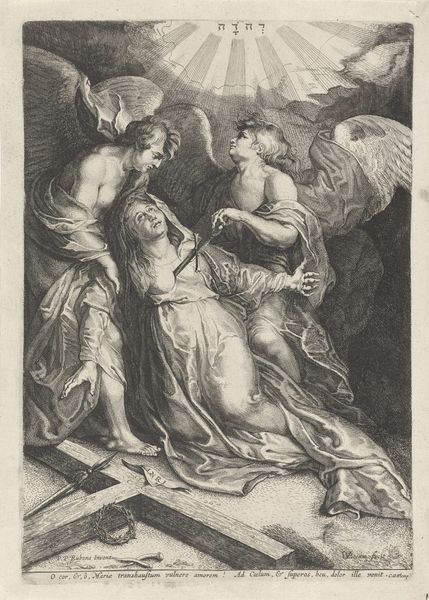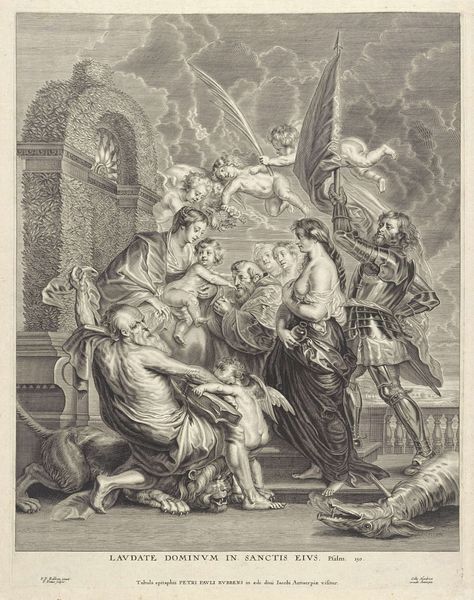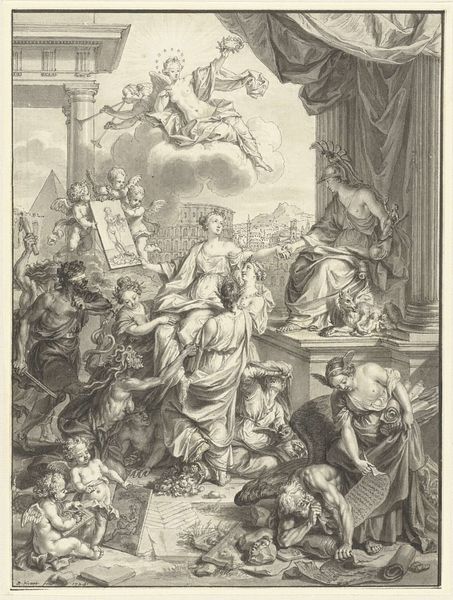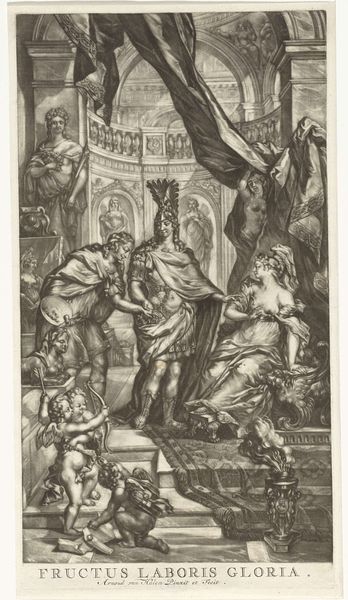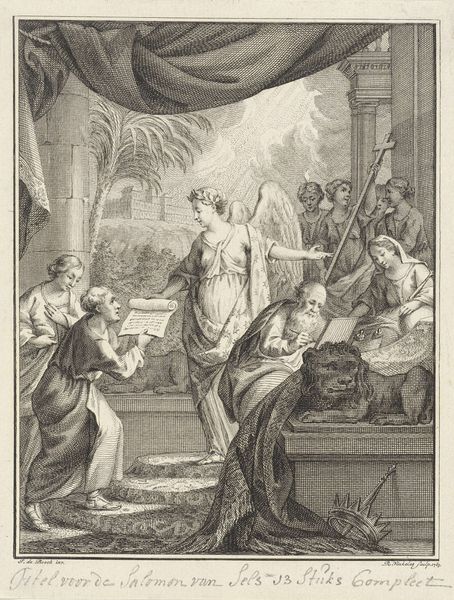
engraving
#
portrait
#
allegory
#
baroque
#
figuration
#
line
#
history-painting
#
engraving
Dimensions: height 290 mm, width 182 mm
Copyright: Rijks Museum: Open Domain
Curator: This engraving, "Allegorische titelpagina met de personificatie van Muziek," from around 1710, was created by Matthijs Pool and now resides in the Rijksmuseum collection. Editor: It's immediately striking; so densely packed with figures and details. The engraving feels theatrical, almost operatic, in its composition. Curator: Indeed. We see a complex allegorical scene unfolded before us, rife with symbolism characteristic of the Baroque period. Consider the way Pool employs line. Every element, from the folds of drapery to the individual hairs, receives meticulous attention, constructing a highly formal, almost architectural composition. The figures are not merely representations, but function as symbolic vehicles within a visual syntax. Editor: And the use of engraving emphasizes the print-making process—the incisions, the labor required to produce this multiplied image. I wonder who was buying it? Look, too, at the foreground filled with stacks of sheet music; a veritable library produced from the labor of musicians and engravers. Curator: Note the figure presenting a laurel wreath – Apollo perhaps? He offers it to the personification of Music herself. Consider the significance of that gesture; the recognition of creative achievement through the established language of classical symbolism. It reinforces Music's place within a hierarchy of value and intellect. The surrounding figures almost appear to be witnesses in attendance. Editor: And in the medallion floating at the top of the engraving is the Queen, head of state and ultimate source of power for cultural endeavors of this era. The overall arrangement does a clever job of combining divine inspiration with a network of human patrons, musical labor, and state control. The engraving serves not only as a visual marker, but a celebration of those that supported its production. Curator: The work's structural clarity invites viewers to consider these historical implications of its layered content. Through the careful manipulation of visual language, Pool invites viewers to examine not only the subject matter but also the artistic frameworks through which that subject matter is constructed. Editor: Exactly, it reveals the intersection of labor, status, and artistic endorsement and is thus not simply about ideal aesthetic forms, but also about the very conditions that allowed it to flourish. Curator: Quite illuminating.
Comments
No comments
Be the first to comment and join the conversation on the ultimate creative platform.
